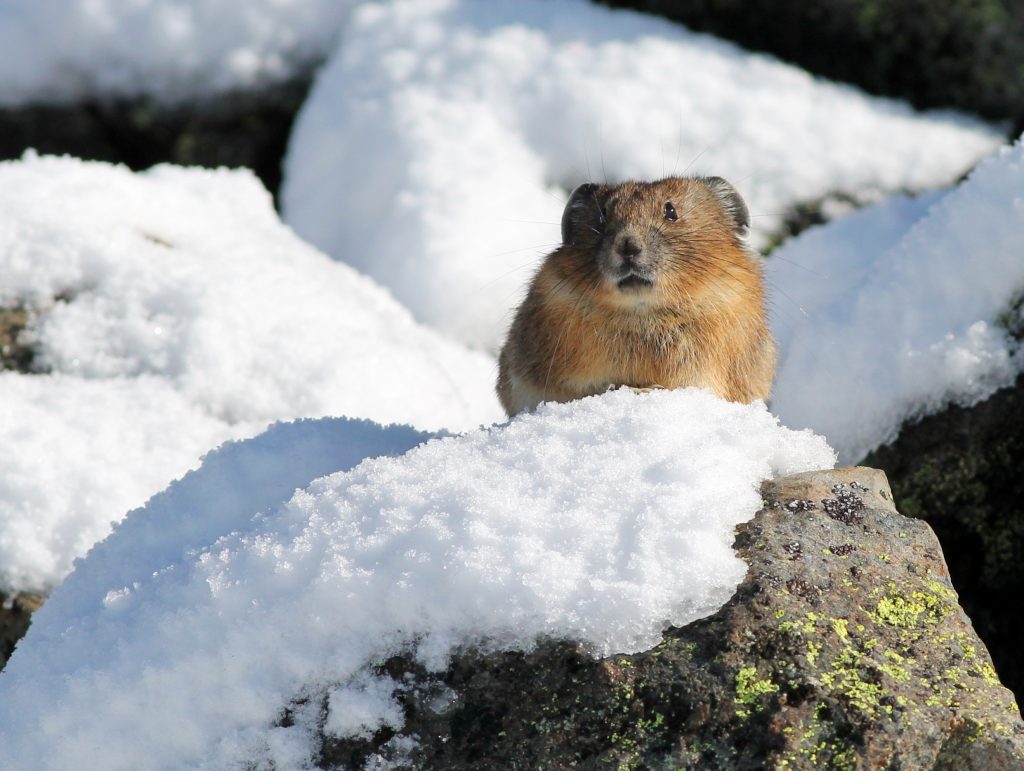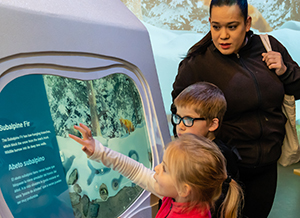
It’s officially spring in the High Desert but that doesn’t mean the snow has gone away. The region’s high-elevation forests will continue to support a sizeable snowpack until the early summer, when the air’s warming temperatures will melt the snow. Melting snow delivers water to rivers, lakes, reservoirs, and aquifers. The melt also sends pulses of water and nutrients into lower-elevation ecosystems, setting off a frenzy of growth and activity.
Interested in learning more about the spring melt out? It’s a perfect time to visit the High Desert Museum’s original exhibit, Under the Snow, which is on display through May 7, 2023. The exhibit is presented in English and Spanish and appeals to children and adults alike. Returning visitors should search the exhibit for new springtime elements, including a sprouting yellow avalanche-lily, a butterfly and baby owls.
The exhibit not only dives into the spring melt out. Visitors also discover five big points about the High Desert’s snowy forests:
- The area between the snow’s surface and the ground provides a special winter habitat, called the subnivium.
- Thousands of plants, animals and fungi depend on the snow, which functions as a thermal blanket. For high-elevation species, the snow makes winter survivable.
- In high-elevation forests, winter weather delivers deep layers of snow, even into the spring months. In certain locations, the snowpack can easily reach 12 feet.
- Climate change is affecting the snow and its inhabitants. Snowpack in the Intermountain West has decreased by at least 20 percent since the 1950s. In the coming decades, warming temperatures could further reduce the region’s snowpack by another 50 percent.
- There are steps all of us can take to protect species attempting to adapt to climate change, including recreating responsibly in the winter, avoiding interactions with wildlife, and supporting forest restoration projects.

While you should never interact with wildlife outside, Under the Snow provides an animated opportunity to hear directly from species that depend on the snow. In the exhibit, meet Pika, Great Gray, Montane the Red Fox, and Fuzzy Foot the Fungus, who talk about their lives in the forest. Having animated animals speak directly to the visitors is a new approach for the High Desert Museum. We debated the advantages and disadvantages of this method, which risks anthropomorphizing species and creating a false sense of intimacy between humans and wildlife. But after speaking with museum and wildlife professionals, we decided that these animated interactions encourage visitors to build empathy for the region’s snow-dependent species. Plus, it’s fun.
We hope that Under the Snow inspires people to get outside and recreate (responsibly!). April, May, and June are perfect months to lace up those hiking boots and hit the mountain trails. Along the retreating snow line, look for budding flowers, stirring mammals, busy insects, and fruiting snowbank fungi.
And remember, visit Under the Snow by May 7 before it melts away!
